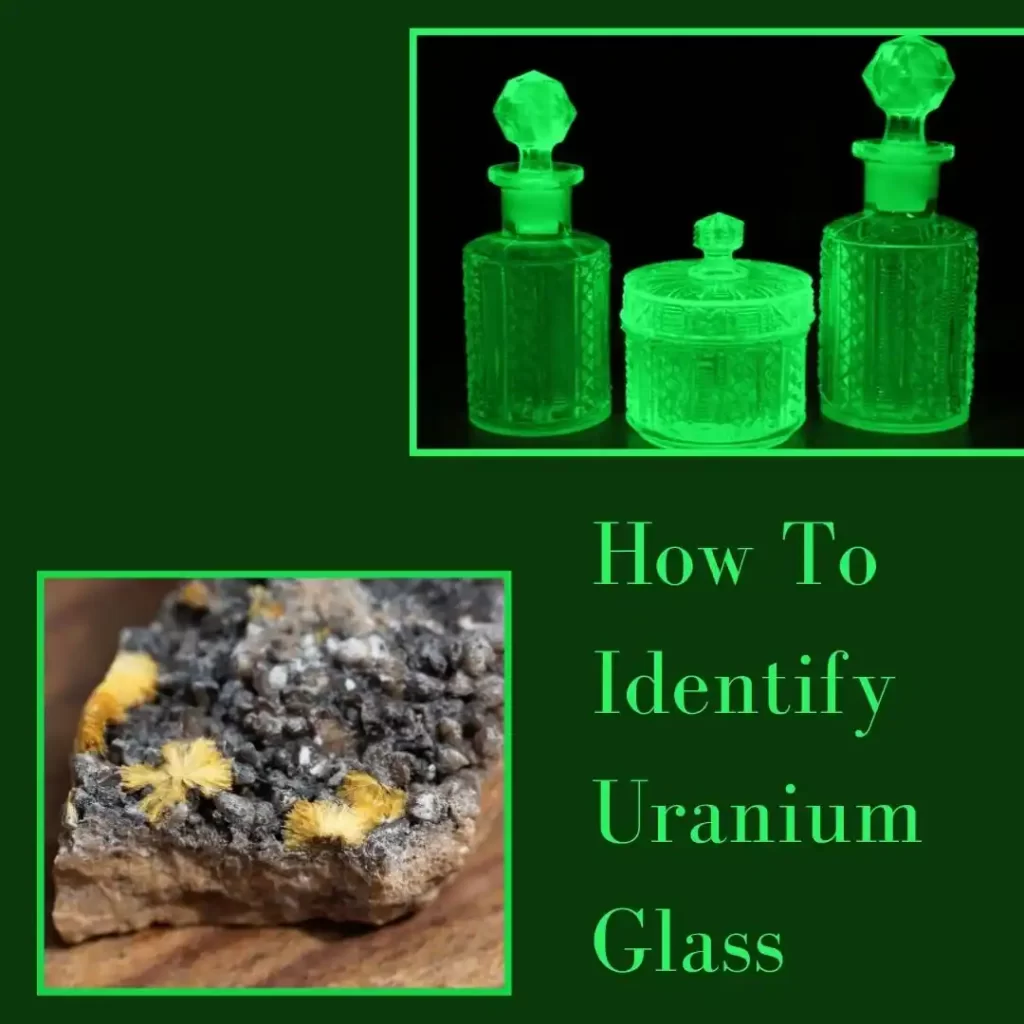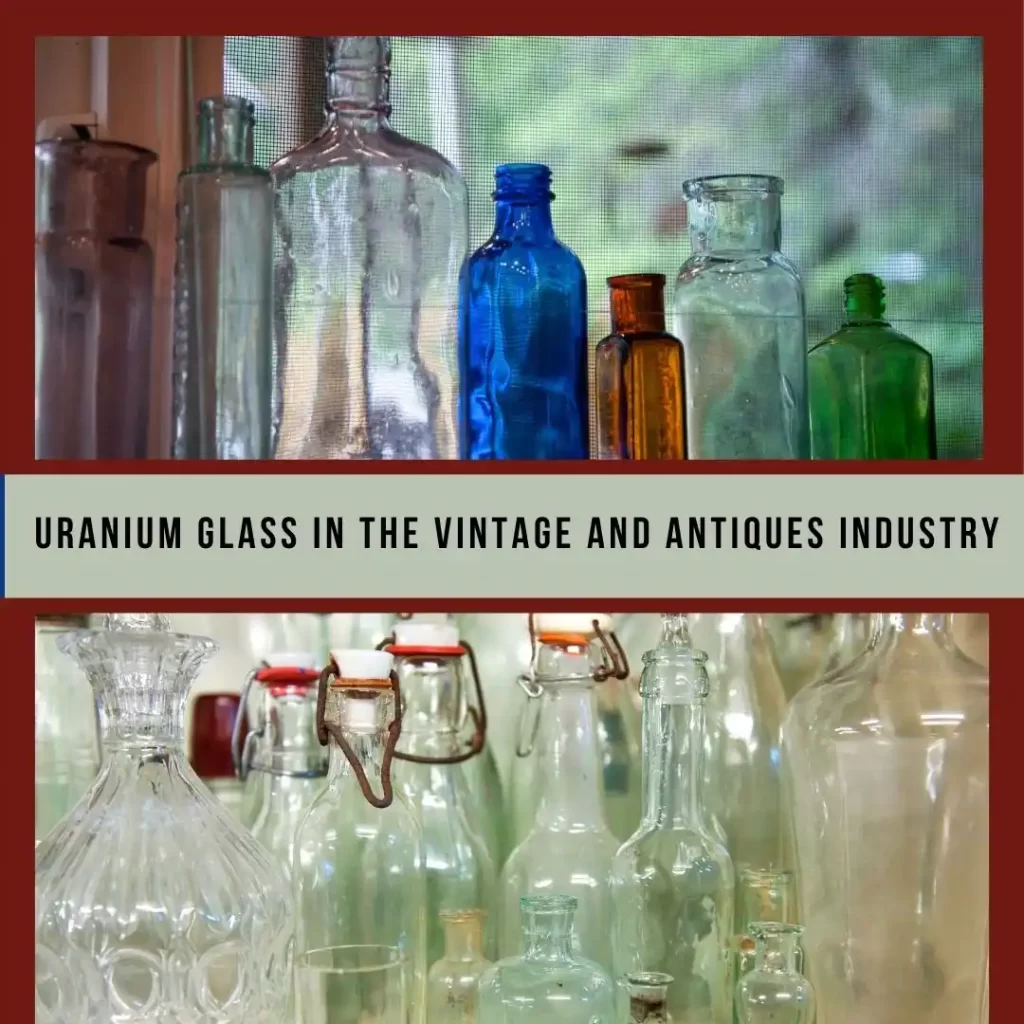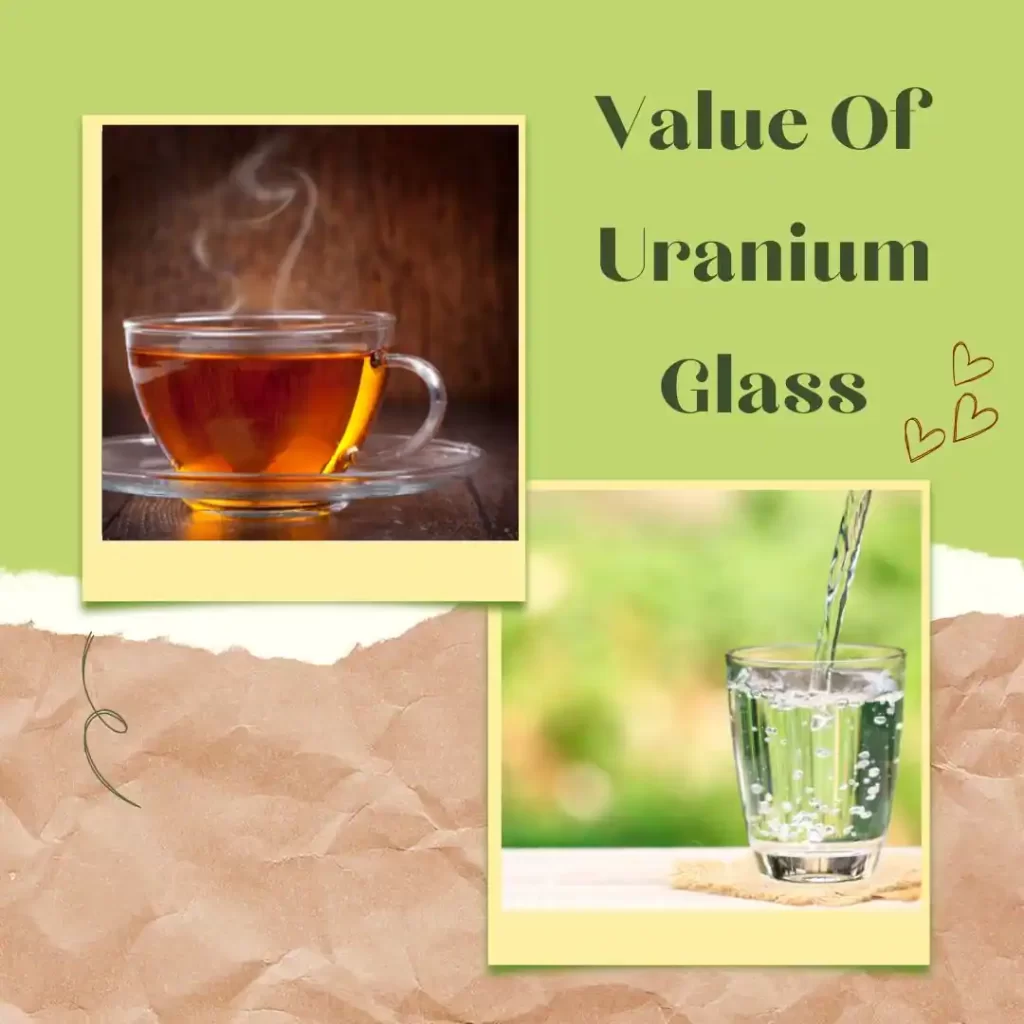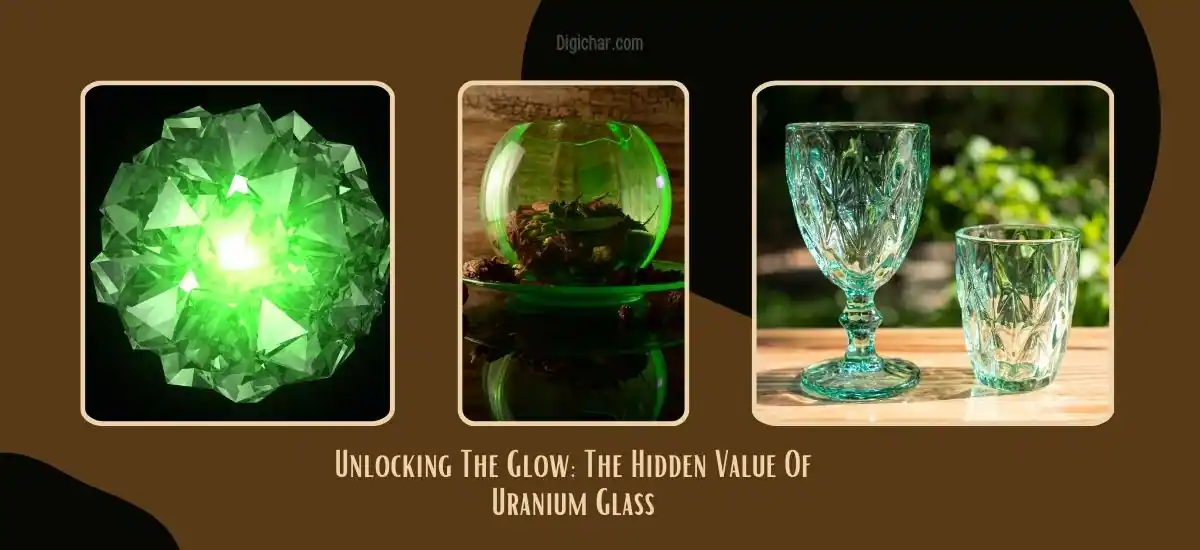Uranium glass, often known as Vaseline glass due to its similar appearance to petroleum jelly, is a fascinating type of glass that has captured the interest of collectors and historians alike. This unique glass gets its name from the small amount of uranium oxide added to the glass mixture during production, which gives it a distinct glowing green color.
This characteristic is not just for show; it actually serves a practical purpose. When exposed to ultraviolet light, uranium glass lights up in a vibrant neon green, making it a favorite among collectors for its beautiful and eerie glow. Originating in the 19th century, this glass was popular for a variety of items, from decorative objects to tableware.
How To Identify Uranium Glass

1. Look for a Green Glow: Uranium glass is famous for its ability to glow under ultraviolet light. If you have a UV or black light, shine it on the glass. If it’s uranium glass, it will glow a bright, neon green. This is the most definitive test.
2. Check the Color: Even without a black light, uranium glass has a distinct color palette. It often appears in shades of green, yellow-green, or even a pale yellow under natural light. However, not all pieces are green; some may be pink, blue, or other colors, but these are less common.
3. Feel the Texture: Older pieces of uranium glass, especially those made in the 19th and early 20th centuries, may have a slightly different texture compared to modern glass. It might feel smoother or have a quality that’s hard to define but feels ‘older’ to the touch.
4. Look for Historical Styles: Familiarize yourself with the styles and patterns popular during the peak periods of uranium glass production, such as the Art Deco period. Many uranium glass items were made in styles that were trendy at the time.
5. Use a Geiger Counter: If you have access to a Geiger counter, it can detect the low levels of radioactivity emitted by uranium glass. This is a more scientific approach and not necessary for casual collectors but can be a fun way to confirm your findings.
Is Uranium Glass Safe Or Dangerous
Uranium glass is pretty cool and, good news, it’s mostly safe to have around. This glass has a tiny bit of uranium in it, which makes it glow under UV light. But don’t worry, the amount is so small that it’s not harmful just to touch or have it displayed in your house.
Even though it’s safe to touch, it’s probably not the best idea to use it for your morning juice or cereal. The risk of anything bad happening is really low, but why take the chance, right. And if you ever find a piece that’s broken, just be careful not to breathe in any dust from it. That’s when it could be a bit risky.
So, you can enjoy your shiny, glowing glass pieces without worry. They’re safe to keep around as long as you’re not eating off of them or breaking them into dust. Enjoy your collection.
Testing Methods To Identify Uranium Glass
- Black Light Test: This is your go-to method. Shine a UV or black light on the glass. If it glows a bright fluorescent green, you’ve hit the jackpot – that’s uranium glass! This happens because the uranium in the glass reacts to the UV light.
- Sunlight Test: Take the glass outside on a sunny day. Uranium glass has a unique sparkle or slight fluorescence in bright sunlight. It’s not as obvious as the black light test, but it’s a good starting point.
- Color Observation: Look closely at the color. Uranium glass typically shows off a green, yellow-green, or even a transparent yellow hue under natural light. Though, keep in mind, not all green glass is uranium glass, so use this method as a first step.
- Professional Appraisal: When in doubt, ask an expert. Antique dealers, especially those who specialize in glass, can often tell at a glance or with a few tests whether you’ve got uranium glass.
- Compare with Known Pieces: If you can, compare your piece with known uranium glass items. This can give you a good idea of the look and feel, as well as the glow under a black light.
Uranium Glass In The Vintage And Antiques Industry

Uranium glass holds a special spot in the world of vintage and antiques, offering a unique blend of history, art, and science that fascinates collectors and enthusiasts alike. This type of glass, known for its distinctive green glow under UV light, dates back to the 19th century but saw a surge in popularity during the early 20th century. Its appeal lies not just in its eye-catching appearance but also in the stories it tells about the eras it comes from.
In the vintage and antiques industry, uranium glass is cherished for its variety and the craftsmanship behind each piece. From elegant tableware and decorative items to striking jewelry beads, it showcases the innovative use of materials and design trends of its time.
Collectors often seek out uranium glass for its aesthetic appeal and the challenge of finding rare or unusual pieces, which can sometimes uncover a piece of forgotten history or a tale of bygone craftsmanship.
Types Of Uranium Glass
1. Vaseline Glass
Vaseline glass, the poster child of uranium glass, owes its name to its resemblance to the color and consistency of petroleum jelly. This type of glass is known for its vibrant yellow-green hue, which comes alive and glows brilliantly under ultraviolet light.
2. Custard Glass
Custard glass presents a softer, more subdued alternative to the bright glow of Vaseline glass. Its creamy, opaque yellow appearance is achieved by adding uranium oxide to the glass mix, giving it a gentle luminescence under a black light. Popular in the late 19th and early 20th centuries, custard glass was commonly used for kitchenware, including dishes and serving items.
3. Depression Glass
During the challenging times of the Great Depression in the United States, depression glass offered a glimmer of beauty and luxury at an affordable price. Manufactured in large quantities and often given away as promotional items, this type of uranium glass came in a variety of colors, including green, pink, and blue.
4. Uranium Glass Beads
Uranium glass beads bring the enchanting glow of uranium to the world of jewelry. These small, decorative beads range in color but typically showcase the distinctive greenish hue associated with uranium glass. Used in necklaces, bracelets, and earrings, these beads add a unique, luminous touch to any outfit.
Value Of Uranium Glass

Uranium glass is truly a fascinating collectible that stands out in the world of antiques and vintage items. What makes it so special isn’t just its monetary value but the unique characteristics and history it carries.
Imagine having a piece of glassware that not only adds beauty to your collection but also glows with a neon green light under UV light. This isn’t just any decorative item; it’s a slice of history from the 1800s and 1900s, a time when the innovation of adding uranium to glass was just being explored.
The glow of uranium glass is its signature trait, making it a favorite among collectors not only for its beauty but also as a conversation starter. It’s a direct link to the creativity and experimental spirit of past artisans and glassmakers. But beyond its luminous allure, the value of uranium glass is also determined by several factors such as its age, rarity, condition, and design.
Key Factors That Influence The Value Of Uranium Glass
| Factor | Description | Impact on Value |
| Age | Older pieces, especially from the 19th and early 20th centuries, are often more sought after. | Increases value |
| Condition | Pieces without chips, cracks, or scratches are more desirable. | Significantly increases value |
| Rarity | The harder it is to find a piece, the more valuable it may be. Unique designs are especially prized. | Greatly increases value |
| Color and Design | Unusual colors (beyond the typical green) and intricate designs can make a piece stand out. | Increases value |
| Maker and Marks | Items made by well-known manufacturers or with identifiable marks can be more valuable. | Increases value |
| Type of Item | Certain items (e.g., lamps, figurines) may be more valuable than common pieces like plates or bowls. | Depends on the item |
| Demand | High demand for specific pieces or styles can drive up prices. | Increases value |
Frequently Asked Questions
Q1. How can I safely display my uranium glass collection?
Ans: When displaying uranium glass, it’s best to place it in a spot where it’s not at risk of being knocked over or broken, like a sturdy shelf or cabinet. Although it’s safe to handle, minimizing direct, prolonged contact is wise.
Q2. Can uranium glass be repaired if it’s broken or chipped?
Ans: Yes, uranium glass can be repaired, but it’s important to find a professional experienced in working with antique glass. Keep in mind, though, that repairs might affect its value, especially if the fix is noticeable.
Q3. How does uranium glass react to different lighting conditions?
Ans: Uranium glass displays its famous green glow most prominently under UV or black light, making its unique characteristics stand out. In natural sunlight, it can have a soft fluorescence or sparkle, and under regular indoor lighting
Q4. Is there a best time or place to buy uranium glass for my collection?
Ans: The best time to buy uranium glass is often at antique shows, flea markets, estate sales, or online auctions, where you might find unique pieces at reasonable prices. Prices can vary widely based on the factors previously mentioned, so it’s wise to do your research and shop around.

